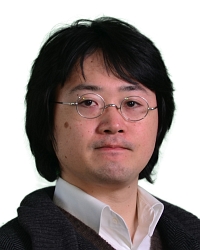TR2017-053
Nonlinearity-tolerant modulation formats at 3.5 bits/symbol
-
- , "Nonlinearity-tolerant modulation formats at 3.5 bits/symbol", Conference on Lasers and Electro-Optics (CLEO), DOI: 10.1364/CLEO_SI.2017.STu4M.3, May 2017.BibTeX TR2017-053 PDF
- @inproceedings{Kojima2017may,
- author = {Kojima, Keisuke and Yoshida, Tsuyoshi and Koike-Akino, Toshiaki and Millar, David S. and Matsuda, Keisuke and Parsons, Kieran},
- title = {{Nonlinearity-tolerant modulation formats at 3.5 bits/symbol}},
- booktitle = {Conference on Lasers and Electro-Optics (CLEO)},
- year = 2017,
- month = may,
- doi = {10.1364/CLEO_SI.2017.STu4M.3},
- url = {https://www.merl.com/publications/TR2017-053}
- }
- , "Nonlinearity-tolerant modulation formats at 3.5 bits/symbol", Conference on Lasers and Electro-Optics (CLEO), DOI: 10.1364/CLEO_SI.2017.STu4M.3, May 2017.
-
MERL Contacts:
-
Research Areas:
Abstract:
For long-haul and metro 100 Gb/s coherent optical transport, dual-polarized quadrature phase-shift keying (DPQPSK), with a spectral efficiency of 4 bits/symbol, is a standard solution. Also, polarization-switched quadrature phase-shift keying (PS-QPSK) [1] is commonly used for 3 bits/symbol. To optimize the spectral efficiency and the reach under various transmission conditions, it is important to have finer granularity in spectral efficiency. However, there is no de facto standard for 3.5 bits/symbol spectral efficiency. In long-haul transmission, fiber nonlinearity is the critical factor limiting the reach. One effective way is to use Grassmann code [2, 3] to be robust against state of polarization (SOP) rotation including cross polarization modulation (XPolM). Another way is to manage the SOP, such that its fluctuation is minimal [4].
In this paper, we propose two modulation formats targeting 3.5 bits/symbol spectral efficiency in different ways. One is to extend the 8D Grassmann code concept for this spectral efficiency. Another is to combine the block-coded high-dimensional modulation and the SOP management. Their excellent nonlinear transmission performances are demonstrated in simulations.

